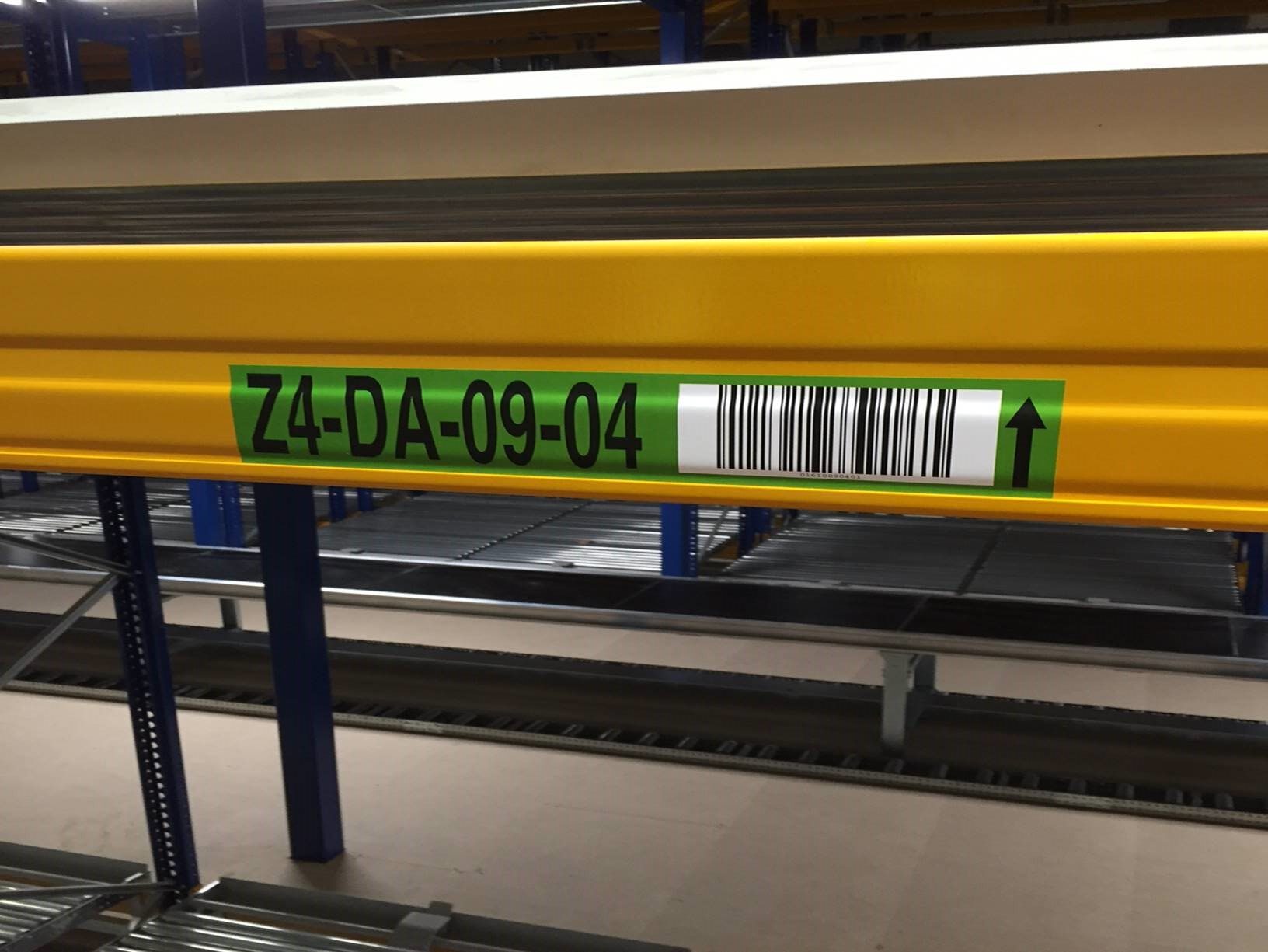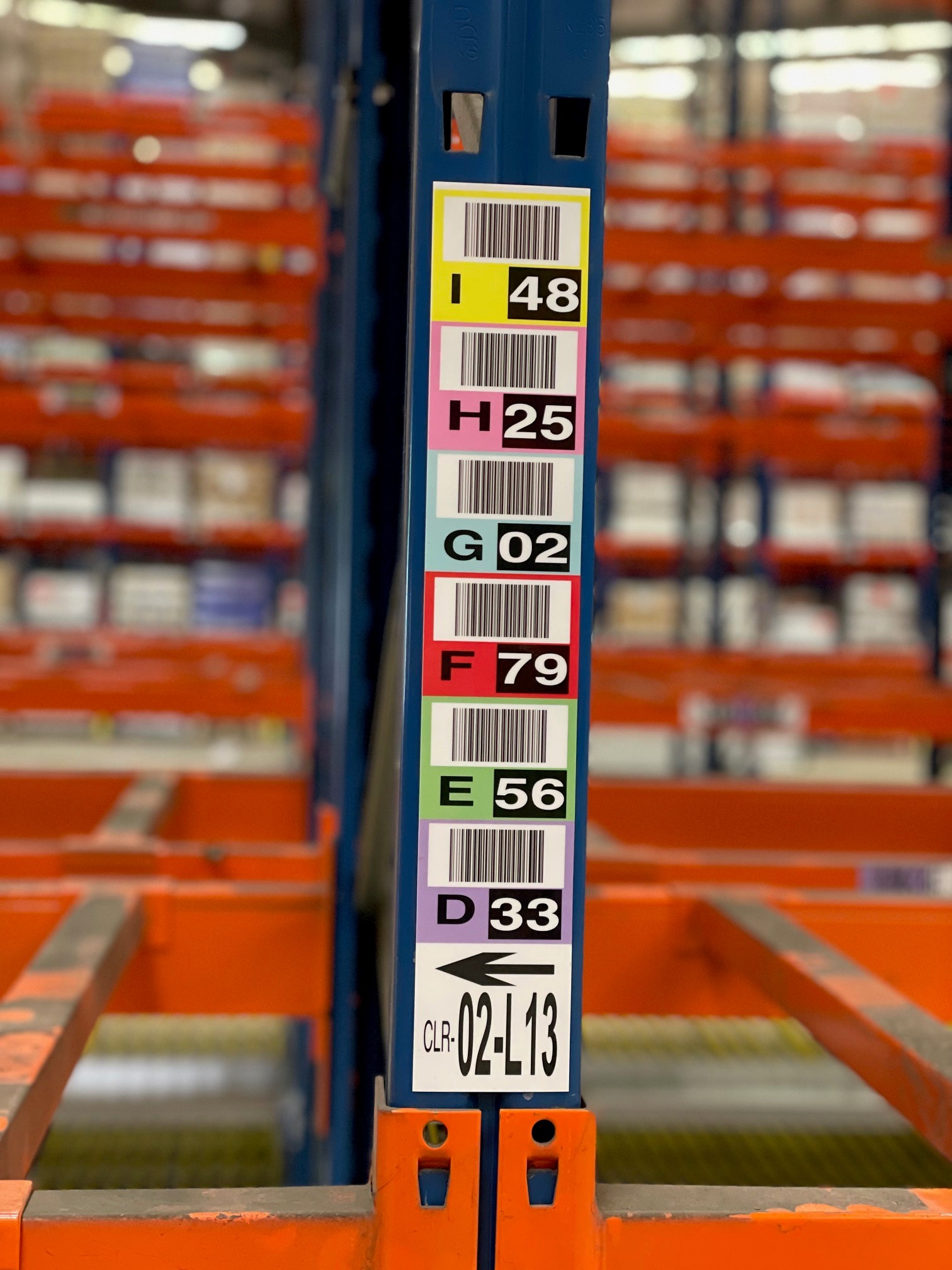Top Considerations When Choosing Warehouse Labelling
An organised warehouse is the backbone of an efficient supply chain. Proper labelling ensures that goods are stored correctly, picked accurately, and dispatched swiftly. However, choosing the right warehouse labelling solution isn’t as simple as sticking any label onto a rack or shelf.
To avoid costly mistakes and future headaches, it’s important to consider several key factors when selecting your labels.

Here are the top considerations to keep in mind when choosing warehouse labelling.
Durability and Material
Warehouse environments can be harsh. Labels may be exposed to dust, moisture, fluctuating temperatures, and physical wear and tear. Choosing the right material — whether that’s polyester, plastic or magnetic labels — is essential for long-lasting performance. Durable labels reduce the need for frequent replacements and help maintain clear visibility over time.
Tip: For cold storage or outdoor environments, opt for labels specifically designed to withstand extreme conditions.
Adhesive Type
Different surfaces and warehouse setups require different adhesives. Permanent adhesives offer strong, long-term attachment but can be difficult to remove if storage layouts change. Removable or repositionable adhesives, on the other hand, provide more flexibility.
Tip: Magnetic labels are an excellent option for metal racks where frequent relabelling or repositioning is necessary.
Visibility and Readability
Clear, easy-to-read labels are crucial for fast identification and efficient picking. Labels should have high-contrast colours (such as black text on a white or yellow background) and use large, legible fonts. We offer full colour options to colour code levels for easier visibility.
Tip: Always test label readability from a typical working distance before committing to a design.

Barcode Compatibility
If your warehouse uses barcode scanners or a warehouse management system (WMS), your labels must be compatible with them. Barcodes should be printed clearly, with sufficient white space (known as the ‘quiet zone’) around the code to ensure accurate scanning.
Tip: Check that your label supplier can print barcodes at the right resolution and to industry standards.
Location and Application Method
Where the label will be placed matters almost as much as the label itself. Will it be applied to shelving, pallets, bins, or floor space? Each location may demand a different label style, size, or mounting method.
Tip: For floor labels, heavy-duty adhesive labels or floor-embedded labels are recommended to prevent wear from foot or forklift traffic.
Flexibility and Scalability
Warehouses evolve — layouts change, stock lines are added, and processes improve. Choosing a labelling solution that offers some flexibility will save time and money down the line. Modular label systems, magnetic labels, or intelligent numbering systems make it much easier to adapt to future needs.
Cost vs Value
While it might be tempting to choose the cheapest labels available, poor-quality labels can end up costing more due to mispicks, scanning errors, and replacements. Investing in a quality labelling system tailored to your operational needs can lead to significant savings and improved efficiency over time.
Final Thoughts on Choosing Warehouse Labelling
Choosing the right labelling system is a crucial investment that will impact the efficiency of your warehouse operations. By carefully considering factors like durability, readability, barcode compatibility, and future flexibility, you can ensure a smoother workflow and avoid costly mistakes.
If you’re looking for expert advice or bespoke labelling solutions, Rack & Shelf Labels are here to help, with high-quality products designed for the demands of busy distribution centres and warehouses.
